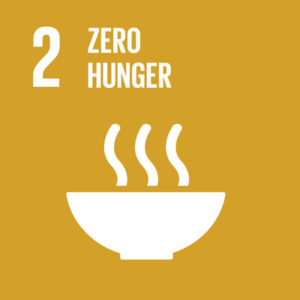Our Story
How Ceres2030 Started
Photo: Credit: Documentation Center of Cambodia (DC-Cam) /Makara Ouch via USAID
Ceres2030 is a collective endeavor aimed at supporting the international effort to end hunger, and what role foreign aid donors can play in supporting this effort effectively. Today, one in nine people on our planet live with hunger, and the past few years have shown that the number of hungry people is increasing, rather than abating. If donors and governments are to give more money to tackle hunger, just how much do they need to spend and what does it need to be spent on?
These questions are central to the United Nations’ commitment to achieving “Zero Hunger” by 2030, the second of the 17 Sustainable Development Goals adopted in 2015. SDG 2 presents hunger as a multi-dimensional problem: on meeting today’s caloric needs to end starvation, while also ensuring that people have the food security to feed themselves and their community in the long term. SDG 2 also highlights the essential role of nutrition in ensuring that people thrive, not just survive, as well as the importance of preserving the environment so that current and future generations will have the natural resources to feed themselves.
As a first step to answering how much it will cost to realize SDG 2 and where that money should be spent, the International Food Policy Research Institute (IFPRI) teamed up with the International Institute for Sustainable Development (IISD) to publish the study Ending Hunger in 2016.
Our study used economic modeling to capture the dynamic effects of investments made to end hunger. For example, an increase in maize yields in Tanzania could, through trade, lower prices for maize in Ethiopia. This will benefit low-income, net-food-consuming households in Ethiopia but might hurt the income of Ethiopian maize farmers. An understanding of these complex economic linkages is crucial to making well-informed policy choices that consider the interests of households facing hunger, as well as those of small-scale producers.
Knowing how much to spend is inseparable from knowing what that money should be spent on and where to avoid wasting scarce resources. Encouraging governments to get on track to realize their SDG commitments has to be accompanied with informed proposals on how to better spend that money.
Ending Hunger looked at the importance of social safety nets, farm support, rural development, enabling policies, and nutrition as categories of public interventions where donors should increase their spending. For that spending to be effective, they recommended that donors focus on countries where these resources were needed the most urgently, as well as on improving the quality of their interventions.
While there have been sustained attempts to address hunger over the past 50 years, SDG 2 was a landmark commitment.

Photo: Trevor Butterworth
H.E. Yusuf Jonga Hinna, Ambassador of Nigeria to Italy, with the co-directors of Ceres2030 David Laborde (IFPRI), Jaron Porciello (Cornell), and Carin Smaller (IISD) at the launch of Ceres2030 on World Food Day at the FAO in Rome, October 2018
Ending Hunger was a first step, and now we plan to dig deeper. SDG 2 has various targets, two of which Ceres2030 has the capacity and resources to analyze more deeply: (i) SDG 2.3: How do you double the income of small-scale food producers? and (ii) SDG 2.4: How do you do so sustainably? We want to know which interventions are effective in supporting the achievement of these targets and we want to model how these interventions affect the wider economy.
This is where Cornell University joined us. To improve the quality of interventions to end hunger, we need to know what the research can tell us about policy interventions and their effectiveness. Agricultural and food research spans millions of articles, thousands of journals, and dozens of repositories. The literature includes peer-reviewed studies from renowned research institutes and reports authored by NGO field staff based on project evaluations for donors, with a vast range of quantity and quality.
Ceres2030 is using machine learning to create a database that brings research together. The database is designed to unlock evidence for decision-makers who want to address specific policies. The method makes it easy to keep track of and incorporate emerging research as it is published, as well as visualizing and sharing findings through a dashboard and app.
We are looking to create a more comprehensive picture of what evidence can tell us about what interventions work and how, along with where the biggest evidence gaps are. This represents a new way to access knowledge and make academic research available to everyone to inform policy questions.
At the same time, we also needed new tools to examine the quality of evidence in agriculture. We are using established protocols for doing systematic and mixed method reviews in agriculture, allowing us to conduct critical appraisals of the strengths and weaknesses of scientific and qualitative research and combine the insights from both. These tools and processes open the way for academic researchers to play a greater role in contributing to the SDGs and policy discussions.
We aim to provide tools and analysis to help achieve SDG 2: What can governments and philanthropists do to improve the level and quality of spending on food security and to end hunger?
While the challenge is large and complex, we hope to help this effort by making the available evidence more useful and developing new insights from the data we have, so that governments can use these results to spend their resources wisely.
Funding
We are grateful for the support of our funders, BMZ (Germany’s Federal Ministry of Economic Cooperation and Development) and the Bill and Melinda Gates Foundation (BMGF).
How we assess the quality of evidence
Our vision and mission
What drives us
Our story
The origin of Ceres2030
Our Research Teams
Eight teams; eight questions
Our team
Who we are
Contact
Get in touch
Ceres 2030 is a partnership between Cornell IP-CALS, the International Food Policy Research Institute (IFPRI), and the International Institute of Sustainable Development (IISD)





